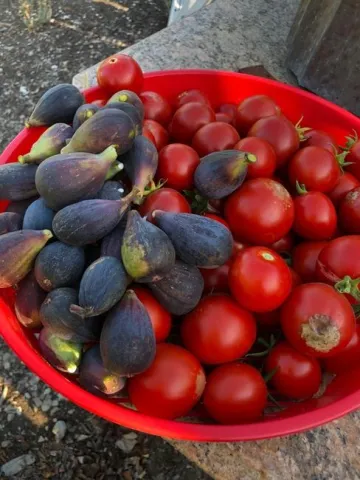
Planting Spring Edibles
By Patty Smith UCCE Master Gardener
As frosty winter nights melt into balmy spring evenings, it's time to get your garden in gear for the new growing year! Plan and plant for success by following this 6 step-plan.
First: Assessing. Walk your planting areas BEFORE beginning any actual work, then create a work plan. You'll ultimately save time and get better results. Major points to note include the status of irrigation, integrity of raised beds, signs of pest activity (especially gophers). Determine how much you want to achieve this year, and what can be reused from last year.
Second: Preparing. Starting with tools in ready-to-work shape makes gardening easier and safer, for you and the plants. You'll want to sharpen shears and shovel blades with a file, clean rust from everything with sandpaper, sterilize with a mild bleach solution, then coat with protective mineral oil.
Third: Cleaning. Use those clean, sharp tools to trim garden perennials such as herbs and berries. Remove damaged or diseased material and cut back trees or shrubs which shade or encroach on planting areas. Dig out any dead or withering plants from last year and remove weeds while they're small. Fallen leaves can be removed or turned into the soil to minimize snail and slug habitats.
Fourth: Conditioning. If you're skipping steps, don't skip this one. It's the key to healthy plants with high yields. Every year, your garden soil needs one to two inches of compost applied before planting to replace nutrients, restore microorganisms, and improve overall soil health. Healthy soil begets healthy plants. Commercial fertilizers provide nutrients but don't build soil structure like compost does.
Fifth: Planning. Now the fun starts! Think about what you like to eat, then determine which of those plants match your sun exposure, soil conditions, and available water. Seed packets and plant tags provide the needed information.
Sixth: Protecting. Birds, bugs, deer, rabbits… they love your fruits and vegetables even more than you. For flying pests, use row covers as a form of exclusion. Lightweight fabrics allow light and water to enter, but bars beaks and biters. For other vertebrate pests, fencing or individual plant baskets may be required. Make a plan before you plant for best pest prevention results.
We are still here
You can view workshops on Instagram live at slo_mg or visit our You Tube channel at “San Luis Obispo County UC Master Gardeners.”
Visit our website at ucanr.edu/sites/mgslo/ or email us questions at anrmgslo@ucanr.edu.
Our physical offices are closed, but you can still reach us:
San Luis Obispo: 805-781-5939
Arroyo Grande: 805-473-7190
Templeton: 805-434-4105

